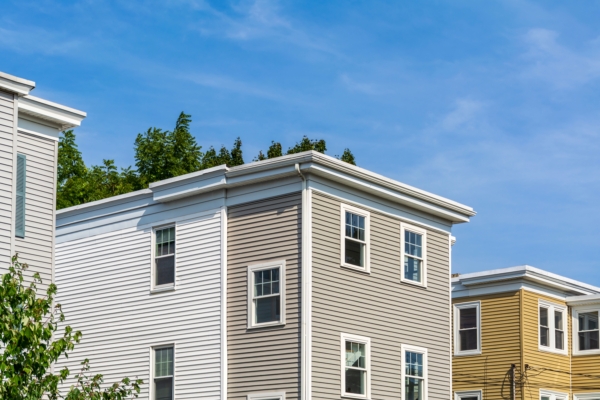In comparison to early or even ancient houses, modern houses stand out not only for their sleek design and sturdy building materials but also for the variety of roof styles they feature. Unlike traditional houses with sloped roofs, many modern houses opt for flat roofs. But why is this the case?
According to a report from the home living website “House Digest,” when people think of modern houses, they may picture grand floor-to-ceiling windows and other luxurious features. However, modern houses also share a practical feature with commercial buildings – flat roofs.
This resemblance is due to the cost-effective and easy-to-install materials used in modern house construction, which became more common during the initial design phase of modern houses. Unlike other interior design trends that change over time, flat roofs are more likely to stand the test of time.
Before the 19th century, most roofs were constructed using organic materials such as wood, stone tiles, or thatch. While these materials were sturdy, they were not waterproof, leading to sloped roofs that facilitated rain and snow drainage.
With the advancement of industrialization, new materials like steel and concrete made different roof structures, including flat roofs, a more viable option. By the 1930s, synthetic materials were widely available, benefiting residential structures with their affordability, flexibility, and unique aesthetic possibilities.
Compared to traditional houses with sloped roofs, constructing a house with a flat roof generally requires less time and cost. This is because fewer materials are needed, and construction workers can maneuver more easily on a flat roof. Once completed, the flat surface makes daily maintenance a breeze.
For many, the immediate aesthetic upgrade in building a flat roof is a significant reason. Whether you prefer a minimalist, modern, contemporary ambiance or seek a rustic feel reminiscent of ranch-style homes, a flat roof can enhance the overall look of your house.
Another benefit of a flat roof is the additional space it provides, ideal for a garden, terrace, or even a hot tub, depending on the size of your house. If you have limited outdoor space or a small house, a flat roof that doubles as a living area can be particularly useful.
One primary drawback of flat roofs is their inability to efficiently drain large amounts of precipitation. Therefore, in areas with frequent rainfall or snowfall, a sloped roof might be a better option. Even in less extreme weather conditions, flat roofs can still present issues in damp environments.
Skilled roofers and high-quality materials can help prevent problems like water leakage with flat roofs. However, pooling water is a common issue with flat roofs, leading to structural damage over time. The only way to mitigate this is by slightly sloping the roof, but this may limit the use of the roof for additional living space securely.
Flat roofs are best suited for regions where such roofs are traditionally incorporated into constructions, such as the Pueblo Native American communities in the southwestern United States. In these areas, flat roofs are a sustainable option, providing a solid foundation for solar panels and rainwater collection systems.

